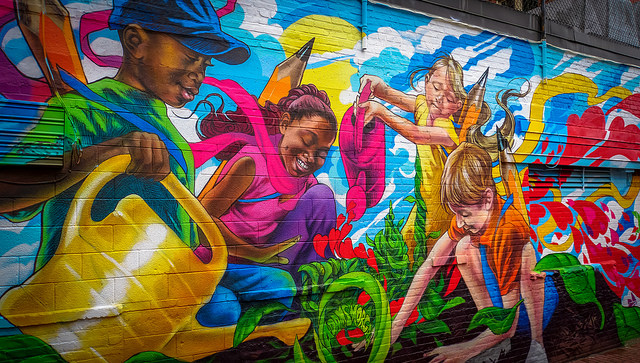
“White flight” describes the uncomfortably common phenomenon in the mid-to-late 20th century wherein whites would quickly move out of a neighborhood once blacks started moving in. This would often lead to neighborhoods that were mostly-white, but quickly ended up mostly-black. Today, American neighborhoods are not as mono-ethnic as they once were, and the picture has expanded beyond blacks and whites to other populations, such as Latinos and Asians.
That said, however, segregation within neighborhood contexts is still present. A recent article in Slate detailed research showing that at the aggregate level, neighborhoods and residential areas are becoming more diverse in the U.S. However, this diversity does not necessarily mean that multicultural, cross-racial social relationships are thriving. Derek Hyra conducted research in parts of Washington, D.C. and found that even in a diverse neighborhood, people’s social associations—such as choice of church, schools, and restaurants—is often in a mono-ethnic context, leading to microsegregation or “diversity segregation.”
This isn’t to necessarily suggest, however, that diverse neighborhoods have no potential to become more integrated. Camille Z. Charles tells Slate that consistent exposure and contact with people of different races can foster integration. Places like public schools and community centers provide the opportunity for these kinds of relationships to develop and lead to diverse neighborhoods where people have diverse friends. Charles explains,
“We are often friendlier with people we actually interact with. We do find there is lasting benefit to that, which is why we think it is important to have [diversity] in schools because kids spend so much time in classrooms and on school campuses.”

Comments